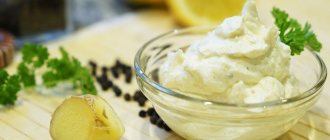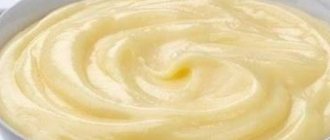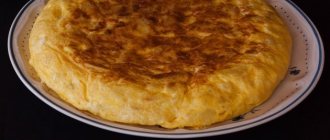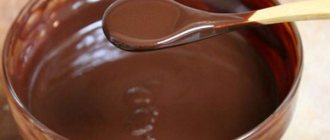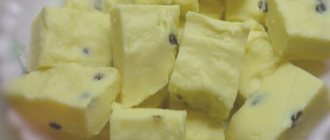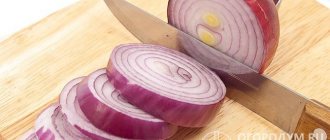Perhaps the most famous oriental delicacy is Turkish delight, translated from Turkish it means “convenient pieces”, in Arabic it means “sweetness for the throat”.
According to legend, Turkish delight was invented for the great Turkish Sultan, who once broke his tooth on a hard candy and got angry with the confectioner.
The latter was forced to come up with another soft delicacy overnight. Another legend says that the Sultan was very loving, and the sweet was invented as an exquisite preliminary treat for the Sultan’s beloved women.
What is Turkish Delight made from: calorie content and composition
In Turkey, Turkish delight, photos of which are presented in our article, is a popular delicacy. Today there is a huge variety of types of Turkish delight:
- walnut;
- fruit;
- honey;
- white;
- fig;
- and others.
Traditionally, recipes contain cornstarch, flour, nuts, sugar and a variety of fruit ingredients such as juice or berries. How many calories are in Turkish delight?
cooking method
1. Melt the butter, add flour to it and cook, stirring constantly, for 5 minutes. 2. Pour in milk and cook until thick. 3. Add regular and vanilla sugar to the mixture. Cook until the sugar is completely dissolved. 4. Pour the mixture into a wide mold so that it covers the bottom of the mold with a 1 cm layer. Let it cool. 5. Cut the frozen mass into strips, roll into rolls, wrapping the nuts inside. In principle, the filling can be anything you like - various nuts, dried fruits, chocolate, etc. 6. Roll the rolls in coconut flakes.
Benefits and harms
Let's figure out what Turkish delight is, what it's made from (composition), in order to determine how much harm and benefit can be obtained from consuming it.
So, what are the benefits of Turkish delight? The increased calorie content of Turkish Delight does not mean that this sweetness should be classified as a harmful product. Thanks to the glucose included in the composition, brain functions and cardiac activity are normalized, serotonin is produced - the hormone of good mood and high performance. In addition, glucose has a good effect on the general condition of hair, skin and nails
.
When combined with cornstarch, glucose forms an immune-boosting component. For the most part, the benefits depend on the flavor components that are traditionally included in Turkish delight: the fruit is enriched with vitamins, and honey improves digestion and blood quality.
A large proportion of nutrients are found in nuts, which are contained in Turkish delight. Nutrients are not destroyed during heat treatment and affect mental activity and the functioning of the cardiovascular system.
Due to the added sugar and high calorie content, excessive consumption of Turkish Delight can lead to diabetes, hypertension and obesity.
, therefore, it is better for people with chronic diseases or leading a sedentary lifestyle to avoid sweets. Plus, the delicacy spoils the enamel and can cause tooth decay.
You should be especially careful about fruit types of Turkish delight when breastfeeding
, most of them contain dyes and flavors. Citrus juices and honey can cause allergies in a baby if they enter his body through breast milk.
Many people talk about the benefits and harms of Turkish delight. The classic type of sweet, consumed in small quantities, will do no harm at all, but it is better to introduce it into the diet gradually, monitoring for a possible allergic reaction. So that the freshness and quality of the product are not in doubt and you can get the maximum benefit from it, it is better to prepare Turkish Turkish delight, recipes with photos of which you will find in the next section, at home yourself.
Turkish delight: recipes
Many people bring Turkish delight from Turkey for themselves and their relatives (the average price in Turkey is about 7 liras). But you can prepare this delicacy at home. So, how to make Turkish delight at home? There are many options for preparing this delicacy; below we will present step-by-step instructions for the most popular Turkish delight recipes; photos and videos are also presented below for a better understanding of the cooking process.
Apple
The apple Turkish delight recipe is quite simple. We will need:
- 120g. corn starch;
- 50g. Sahara;
- 50g. walnuts;
- 4 apples;
- coconut flakes and water.
- First you need to prepare apple jam. To do this, pour a little water into the saucepan and add sugar. Peeled, cored and cut apples are dipped into the syrup, where they languish a little. Finely chopped walnuts are also added there.
- Starch must be dissolved in cold water and poured into the boiling mass in a thin stream. All this time the jam must be stirred until it becomes thick and transparent. This is the most difficult part of the apple Turkish delight recipe - the sweetness will simmer on the fire for at least an hour.
- The bottom and edges of the mold are covered with cling film, where the hot mass is laid out.
- After it has cooled, it needs to be placed in the refrigerator to harden.
- After 12 hours, the Turkish delight can be removed from the mold, cut into cubes and rolled in coconut flakes.
As you can see, you can easily prepare Turkish delight with apples at home according to the recipe, and the video tutorial will make this task easier:
Classical
To prepare classic Turkish delight at home you will need:
- 800 ml. water;
- 1 kg. Sahara;
- 150g. starch;
- 2 g citric acid;
- coconut flakes to taste.
- Add sugar and starch to heated water until completely dissolved and cook with constant stirring for at least an hour. The resulting mass should be viscous and thick. This is the base - white Turkish delight.
- Before it cools, you can add flavoring fillers, or you can leave the classic version - cut the frozen sweetness into shape and roll in coconut flakes or powdered sugar.
Preparing a classic oriental sweet is not difficult, but it will require a lot of patience, diligence and time.
. This is a basic recipe for classic Turkish delight, which can be improved based on your taste preferences. The share of any additive should not be more than a third of the main mass.
A more detailed recipe for Turkish delight in the video below:
Carrot
For carrot Turkish delight you need:
- 500 g carrots;
- 200 g starch;
- 150 g sugar;
- 150 g walnuts;
- half a lemon;
- water;
- coconut flakes;
- Grate the carrots and put them in a saucepan, add sugar and a little water. The mixture should simmer over low heat for at least 10 minutes.
- Then add lemon zest and finely chopped nuts.
- Starch dissolved in a small amount of water is carefully poured into the boiling mass, after which it is cooked until thickened.
- As in classic recipes, the resulting Turkish delight is placed in a mold, cooled and left in the refrigerator for 12 hours until hardened. After this, it can be cut into cubes and rolled in coconut flakes.
The main difficulty in preparing an oriental delicacy is the duration.
Taking into account all the stages of preparation and cooling, it takes more than a day.
If you were wondering how to make Turkish delight at home with carrots, then this video instruction is for you:
Basic Turkish Delight Recipe
Compound:
- sugar – 0.3 kg;
- water – 0.3 l;
- corn starch – 100 g;
- citric acid – 1 g;
- vanillin (optional) – 1 g;
- powdered sugar – 50 g.
Cooking method:
- Dilute half of the starch specified in the recipe with 200 ml of cold, but boiled water. Stir. Place on low heat. Cook, stirring, until the mixture first turns white and then begins to lighten.
- Boil the molasses in a separate container. To do this, mix the remaining water with sugar and heat until it acquires an appetizing golden color. The finished molasses turns out to be almost as thick as liquid honey, and smells barely noticeably of caramel.
- Combine molasses with starch mass, add citric acid and vanillin.
- Cook the mixture, stirring constantly, until the mixing process becomes difficult.
- Line the pan with cling film, pour the thick mixture into it, and smooth it out with a spatula.
- Cover the top with cling film and place in the refrigerator.
- After 6-8 hours (not earlier), sprinkle the Turkish delight with a mixture of powdered sugar and starch. Pour the same mixture onto a board, turn the Turkish delight onto it, remove the mold and film. Sprinkle the other side of the treat with the starch-sugar mixture. Cut into cubes, dip their sides in the dry mixture, and place them on a plate.
Only after all the described manipulations have been completed, Turkish delight can be served. It goes especially well with tea.
Storage
Now let's talk about how to store Turkish delight:
- It is customary to store prepared Turkish delight wrapped in food paper, which will protect it from moisture, in a cool, dry place. Under such conditions, the shelf life of Turkish delight will be at least six months.
- You should not replace parchment with film or foil - they do not protect against moisture, so the sweetness will quickly spoil. Contact with air should also be avoided, so Turkish delight packed in paper is stored in a special container.
Already in the 19th century, oriental sweetness received great publicity throughout Europe after the Brussels Exhibition, where it won a gold medal. “Turkish Delight” - this is what the British called Turkish Delight, who particularly enjoyed the delicacy while drinking tea.
Since then, traditional recipes have not changed, and the sweetness is still very popular to this day. And as you have already noticed, in order to try Turkish delight it is not at all necessary to fly to Turkey; it is quite easy to prepare at home if you have certain ingredients. Be patient and you will certainly succeed. But we still recommend going to Turkey, enjoying not only sweets, but also a wonderful beach holiday (,). Perform a unique ( , ), ( , ).
Turkish delight - translated as “convenient pieces”
Turkish delight is an oriental delicacy, translated from Turkish as “convenient pieces”, it is similar in appearance, but differs in taste and viscousness. In this article I will tell you what Turkish delight is made from, its composition, its harm and benefits for our body.
Turkish delight is made from water, with the addition of starch, various nuts (pistachios, almonds, etc.) and fruit juices.
The first Turkish delight was made more than 500 years ago from water, sugar and starch, and rose petals were used as an additive.
Video from the Galileo program about Turkish delight:
The main components of any Turkish delight are water, starch and sugar. If you do not add other ingredients, you will get white Turkish delight. To give color to Turkish delight, food coloring is added.
To diversify the taste, fruit juices, nuts, and various toppings (for example, coconut flakes) are added to Turkish delight.
The nutritional value of Turkish delight is rich in carbohydrates, because... proteins and fats are less than 1 g, and carbohydrates are about 80 g per 100 grams of product.
Calorie content
The calorie content of Turkish delight is 316 kcal. This is quite a lot, so you shouldn’t abuse it.
Calorie content is approximate and may vary, because... depends on the composition and ingredients (for example, adding nuts).
Recipe for whipped Turkish delight with cranberries VkusVill. Calorie, chemical composition and nutritional value.
Nutritional value and chemical composition of “Whipped delight with cranberries VkusVill”.
The table shows the nutritional content (calories, proteins, fats, carbohydrates, vitamins and minerals) per 100 grams of edible portion.
| Nutrient | Quantity | Norm** | % of the norm in 100 g | % of the norm in 100 kcal | 100% normal |
| Calorie content | 269.2 kcal | 1684 kcal | 16% | 5.9% | 626 g |
| Squirrels | 1.2 g | 76 g | 1.6% | 0.6% | 6333 g |
| Fats | 0.1 g | 56 g | 0.2% | 0.1% | 56000 g |
| Carbohydrates | 65.5 g | 219 g | 29.9% | 11.1% | 334 g |
| Organic acids | 0.7 g | ~ | |||
| Alimentary fiber | 0.9 g | 20 g | 4.5% | 1.7% | 2222 g |
| Water | 31.5 g | 2273 g | 1.4% | 0.5% | 7216 g |
| Ash | 0.229 g | ~ | |||
| Vitamins | |||||
| Vitamin B1, thiamine | 0.005 mg | 1.5 mg | 0.3% | 0.1% | 30000 g |
| Vitamin B2, riboflavin | 0.063 mg | 1.8 mg | 3.5% | 1.3% | 2857 g |
| Vitamin B4, choline | 3.71 mg | 500 mg | 0.7% | 0.3% | 13477 g |
| Vitamin B5, pantothenic | 0.023 mg | 5 mg | 0.5% | 0.2% | 21739 g |
| Vitamin B6, pyridoxine | 0.02 mg | 2 mg | 1% | 0.4% | 10000 g |
| Vitamin B9, folates | 0.343 mcg | 400 mcg | 0.1% | 116618 g | |
| Vitamin B12, cobalamin | 0.008 mcg | 3 mcg | 0.3% | 0.1% | 37500 g |
| Vitamin C, ascorbic acid | 3.57 mg | 90 mg | 4% | 1.5% | 2521 g |
| Vitamin E, alpha tocopherol, TE | 0.238 mg | 15 mg | 1.6% | 0.6% | 6303 g |
| Vitamin H, biotin | 0.667 mcg | 50 mcg | 1.3% | 0.5% | 7496 g |
| Vitamin RR, NE | 0.3579 mg | 20 mg | 1.8% | 0.7% | 5588 g |
| Niacin | 0.067 mg | ~ | |||
| Macronutrients | |||||
| Potassium, K | 46.62 mg | 2500 mg | 1.9% | 0.7% | 5363 g |
| Calcium, Ca | 9.1 mg | 1000 mg | 0.9% | 0.3% | 10989 g |
| Magnesium, Mg | 5.05 mg | 400 mg | 1.3% | 0.5% | 7921 g |
| Sodium, Na | 22.9 mg | 1300 mg | 1.8% | 0.7% | 5677 g |
| Sera, S | 17.81 mg | 1000 mg | 1.8% | 0.7% | 5615 g |
| Phosphorus, Ph | 11.1 mg | 800 mg | 1.4% | 0.5% | 7207 g |
| Chlorine, Cl | 16.38 mg | 2300 mg | 0.7% | 0.3% | 14042 g |
| Microelements | |||||
| Iron, Fe | 0.386 mg | 18 mg | 2.1% | 0.8% | 4663 g |
| Yod, I | 0.67 mcg | 150 mcg | 0.4% | 0.1% | 22388 g |
| Cobalt, Co | 0.095 mcg | 10 mcg | 1% | 0.4% | 10526 g |
| Manganese, Mn | 0.0007 mg | 2 mg | 285714 g | ||
| Copper, Cu | 4.95 mcg | 1000 mcg | 0.5% | 0.2% | 20202 |
| Molybdenum, Mo | 0.381 mcg | 70 mcg | 0.5% | 0.2% | 18373 g |
| Chromium, Cr | 0.29 mcg | 50 mcg | 0.6% | 0.2% | 17241 g |
| Zinc, Zn | 0.022 mg | 12 mg | 0.2% | 0.1% | 54545 g |
| Digestible carbohydrates | |||||
| Starch and dextrins | 5.348 g | ~ | |||
| Mono- and disaccharides (sugars) | 60.1 g | max 100 g | |||
| Glucose (dextrose) | 0.595 g | ~ | |||
| Sucrose | 0.048 g | ~ | |||
| Fructose | 0.262 g | ~ | |||
| Essential amino acids | |||||
| Arginine* | 0.059 g | ~ | |||
| Valin | 0.07 g | ~ | |||
| Histidine* | 0.024 g | ~ | |||
| Isoleucine | 0.06 g | ~ | |||
| Leucine | 0.088 g | ~ | |||
| Lysine | 0.065 g | ~ | |||
| Methionine | 0.039 g | ~ | |||
| Methionine + Cysteine | 0.066 g | ~ | |||
| Threonine | 0.046 g | ~ | |||
| Tryptophan | 0.016 g | ~ | |||
| Phenylalanine | 0.064 g | ~ | |||
| Phenylalanine+Tyrosine | 0.102 g | ~ | |||
| Nonessential amino acids | |||||
| Alanin | 0.066 g | ~ | |||
| Aspartic acid | 0.096 g | ~ | |||
| Glycine | 0.037 g | ~ | |||
| Glutamic acid | 0.144 g | ~ | |||
| Proline | 0.038 g | ~ | |||
| Serin | 0.072 g | ~ | |||
| Tyrosine | 0.038 g | ~ | |||
| Cysteine | 0.027 g | ~ |
The energy value of whipped Turkish delight with VkusVill cranberries is 269.2 kcal.
Primary Source: Created in the application by the user. Read more.
** This table shows the average levels of vitamins and minerals for an adult. If you want to know the norms taking into account your gender, age and other factors, then use the “My Healthy Diet” application.
Harm and benefit
The benefits of Turkish Delight include a large amount of glucose, which activates the brain, so you can eat it before an exam. Other beneficial properties of Turkish delight will directly depend on its filling, for example, nuts.
The harm of Turkish delight is primarily associated with the large amount of simple carbohydrates in its composition, so you should not abuse it, otherwise it can lead to the development of obesity. People suffering from diabetes and people leading an inactive lifestyle should use with caution.
Turkish delight can be purchased at almost any store, but you can also prepare it at home. There are many recipes for making Turkish delight, but I will not describe them all, because this is not a culinary site, so I suggest watching a video of one of the recipes and trying to cook it yourself:
Turkish delight is a traditional, perhaps the most famous oriental sweet. All oriental recipes are not particularly difficult to prepare, but, nevertheless, they invariably have an excellent, incomparable taste and aroma. It is precisely Turkish delight that is the clearest confirmation of this rule; it is not for nothing that in the East this magnificent sweetness is called nothing more than “a piece of pleasure.” To prepare Turkish delight, you need the simplest, most affordable, and most importantly natural products. No flavor enhancers, animal fat or palm oil for you! That is why Turkish delight belongs to the category of ecological, healthy confectionery products. In addition, Turkish delight, made on a purely plant basis, is a real treat for vegetarians or people who observe strict fasting.
Step-by-step video recipe
Ingredients:
- 1 cup fruit or berry puree
- 300 gr. Sahara
- 200 ml. water for syrup + 150 ml. water for starch
- 1 cup cornstarch + 2 tbsp. for sprinkling
- 1 tbsp. lemon juice
- 1/2 cup powdered sugar
- First, prepare the sugar syrup. To do this, pour 200 ml into a ladle or small saucepan. water, add sugar.
- Add a spoon of lemon juice.
- Stirring, heat, and then boil for 5-10 minutes. In this case, the sugar completely dissolves, and the resulting syrup thickens slightly. The finished syrup for Turkish delight should leave clearly visible streaks on the walls of the saucepan.
- While the sugar syrup is boiling, we have time to prepare fruit or berry puree. Any fruit and berries are suitable for puree. Of course, it’s very beautiful when there are multi-colored cubes of Turkish delight in a vase or on a tray, but to achieve this, you will have to tinker and prepare several servings of sweetness, each time using a new fruit base. For red Turkish delight, strawberry or cranberry puree is suitable, for green - from kiwi, for yellow - from apricots, peaches or oranges, for purple - from black currant or chokeberry. Moreover, you can use both fresh and canned fruits.
- As a first try, I suggest making Turkish delight from orange. This is my favorite option. The result is an incredibly fragrant sweetness with a slight sourness. Although, what am I explaining to you, my dear readers, you all remember the taste of orange marmalade very well!
- To prepare orange puree, peel the orange and divide it into slices. Grind the slices with a blender until a homogeneous mass is obtained.
- Pour the orange puree into the syrup standing on the fire.
- In the version with orange, there is no need to strain the puree, since the orange is completely ground with a blender knife, but if you are preparing Turkish delight from kiwi or other berries containing small seeds, then I advise you to rub the puree through a coarse sieve to remove seeds or large pieces of skin.
- After we put the fruit puree into the syrup, mix the resulting mixture well and boil for a few more minutes.
- Dilute starch in 150 ml. water. Mix thoroughly until completely dissolved.
- Pour the starch solution into the sugar-orange syrup in a thin stream and continue to cook over low heat.
- Without ceasing, stir the mixture with a wooden spatula. The starch-fruit mixture begins to thicken very quickly. Moreover, it thickens not throughout the entire volume, but by forming separate clots. This is fine. We continue to vigorously stir and soon the clots will grow and combine into a thick paste.
- You need to be vigilant to ensure that nothing burns; if this happens, reduce the heat.
- After 3-5 minutes, the paste will thicken so much that mixing it will become quite difficult. This means that our Turkish delight has been cooked and now after cooling it will harden well and will not become soggy.
- At the end of cooking, place the mixture in a flat cooking dish, previously generously sprinkled with starch. The shape can be any: glass, silicone, detachable, etc. The dimensions of the mold should be such that the prepared mixture forms a layer 2.5-3 cm thick on it.
- To make the surface of the mixture smooth and without bumps, lightly sprinkle it with starch and then press it down with a spoon. Thanks to starch, the mixture does not stick to the spoon.
- Let the form with hot Turkish delight cool at room temperature for 10-12 hours.
- After cooling, cover the mold with a cutting board and turn the entire structure upside down. The layer of Turkish delight is very easily separated from the mold and dumped onto the board.
- A layer of Turkish delight is cut with a sharp knife into square pieces measuring 2.5-3 cm. Considering that the thickness of the layer was approximately the same, the result is nice, even cubes.
- Roll the Turkish delight cubes in cornstarch, shake off the excess, then repeat this operation, but with powdered sugar. You can add more powdered sugar and even sprinkle it generously on our sun cubes, this is an additional protection against sticking.
- That's all, the magnificent fruity Turkish delight is ready. You can enjoy the taste and imagine yourself in the exotic east. Yes, one more little thing: it is better to store Turkish delight in a vase with a lid or a closed taper in a cool place, away from sunlight.
Perhaps one of the most popular oriental sweets, which is often brought as a gift or simply bought for oneself, is Turkish delight. Surprisingly tender, and at the same time dense, sweet and not very sweet, with many different tastes - Turkish delight will leave few people indifferent. Another undeniable advantage of this delicacy is its relatively low calorie content - this is why people with a sweet tooth also love it.
The sweetness appeared a very long time ago - about 500 years ago, but it is not known for certain exactly how. There are several legends about both the appearance of Turkish delight itself and the formation of its name. One version of the origin of the name is its translation from Arabic as “satisfaction of the throat.” The Turkish translation is not much different - “a piece of satisfaction.” As you can see, in both cases we are talking about the pleasure that eating this dessert gives.
There are also many versions of the appearance of Turkish delight. Some claim that it was at the request of the Sultan himself that his cook invented the sweet to conquer beautiful women. Others say that the dessert appeared as a result of a rivalry between two chefs, while others attribute the creation of the oriental sweet to a Turkish pastry chef named Ali Muhiddin Hacı Bekir Efendi. And these are just some versions. But whatever the origin of Turkish delight, this does not affect its popularity in any way. Tender, tasty, dense, moderately sweet - try making Turkish delight using one of the recipes below, and you will definitely appreciate the result.
Recipe 5: Fruit Turkish Delight (with photo)
Turkish delight is a traditional, perhaps the most famous oriental sweet. All oriental recipes are not particularly difficult to prepare, but, nevertheless, they invariably have an excellent, incomparable taste and aroma. It is precisely Turkish delight that is the clearest confirmation of this rule; it is not for nothing that in the East this magnificent sweetness is called nothing more than “a piece of pleasure.” To prepare Turkish delight, you need the simplest, most affordable, and most importantly natural products. No flavor enhancers, animal fat or palm oil for you! That is why Turkish delight belongs to the category of ecological, healthy confectionery products. In addition, Turkish delight, made on a purely plant basis, is a real treat for vegetarians or people who observe strict fasting.
- 1 cup fruit or berry puree
- 300 gr. Sahara
- 200 ml. water for syrup + 150 ml. water for starch
- 1 cup cornstarch + 2 tbsp. for sprinkling
- 1 tbsp. lemon juice
- ½ cup powdered sugar
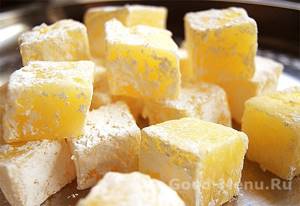
First, prepare the sugar syrup. To do this, pour 200 ml into a ladle or small saucepan. water, add sugar.
Add a spoon of lemon juice.
Stirring, heat, and then boil for 5-10 minutes. In this case, the sugar completely dissolves, and the resulting syrup thickens slightly. The finished syrup for Turkish delight should leave clearly visible streaks on the walls of the saucepan.
While the sugar syrup is boiling, we have time to prepare fruit or berry puree. Any fruit and berries are suitable for puree. Of course, it’s very beautiful when there are multi-colored cubes of Turkish delight in a vase or on a tray, but to achieve this, you will have to tinker and prepare several servings of sweetness, each time using a new fruit base. For red Turkish delight, strawberry or cranberry puree is suitable, for green - from kiwi, for yellow - from apricots, peaches or oranges, for purple - from black currant or chokeberry. Moreover, you can use both fresh and canned fruits.
As a first try, I suggest making Turkish delight from orange. This is my favorite option. The result is an incredibly fragrant sweetness with a slight sourness. Although, what am I explaining to you, my dear readers, you all remember the taste of orange marmalade very well!
To prepare orange puree, peel the orange and divide it into slices. Grind the slices with a blender until a homogeneous mass is obtained.
Pour the orange puree into the syrup standing on the fire.
In the version with orange, there is no need to strain the puree, since the orange is completely ground with a blender knife, but if you are preparing Turkish delight from kiwi or other berries containing small seeds, then I advise you to rub the puree through a coarse sieve to remove seeds or large pieces of skin.
After we put the fruit puree into the syrup, mix the resulting mixture well and boil for a few more minutes.
Dilute starch in 150 ml. water. Mix thoroughly until completely dissolved.
Pour the starch solution into the sugar-orange syrup in a thin stream and continue to cook over low heat.
Without ceasing, stir the mixture with a wooden spatula. The starch-fruit mixture begins to thicken very quickly. Moreover, it thickens not throughout the entire volume, but by forming separate clots. This is fine. We continue to vigorously stir and soon the clots will grow and combine into a thick paste.
You need to be vigilant to ensure that nothing burns; if this happens, reduce the heat.
After 3-5 minutes, the paste will thicken so much that mixing it will become quite difficult. This means that our Turkish delight has been cooked and now after cooling it will harden well and will not become soggy.
At the end of cooking, place the mixture in a flat cooking dish, previously generously sprinkled with starch. The shape can be any: glass, silicone, detachable, etc. The dimensions of the mold should be such that the prepared mixture forms a layer 2.5-3 cm thick on it.
To make the surface of the mixture smooth and without bumps, lightly sprinkle it with starch and then press it down with a spoon. Thanks to starch, the mixture does not stick to the spoon.
Let the form with hot Turkish delight cool at room temperature for 10-12 hours.
After cooling, cover the mold with a cutting board and turn the entire structure upside down. The layer of Turkish delight is very easily separated from the mold and dumped onto the board.
A layer of Turkish delight is cut with a sharp knife into square pieces measuring 2.5-3 cm. Considering that the thickness of the layer was approximately the same, the result is nice, even cubes.
Roll the Turkish delight cubes in cornstarch, shake off the excess, then repeat this operation, but with powdered sugar. You can add more powdered sugar and even sprinkle it generously on our sun cubes, this is an additional protection against sticking.
That's all, the magnificent fruity Turkish delight is ready. You can enjoy the taste and imagine yourself in the exotic east. Yes, one more little thing: it is better to store Turkish delight in a vase with a lid or a closed taper in a cool place, away from sunlight.
Classic Turkish Turkish delight made with cornstarch
Incredibly delicious Turkish delight is made using the recipe below. Moreover, it is prepared from simple, inexpensive products that can be easily purchased at your nearest store. The disadvantages of cooking include the process itself - for almost an hour you will need to stand and knead the delicacy for it to really turn out tasty. This is quite difficult, and not everyone can afford it.
But if you are not afraid of these difficulties, and you want to make Turkish delight yourself, be sure to use this recipe. For variety, you can add any filling to your taste: nuts, coconut flakes, raisins and much more.
You will need for the syrup:
- sugar – 4 tbsp;
- water – 1 tbsp.;
- citric acid – 0.5 tsp.
You will need for jelly:
- cold water – 3 tbsp;
- corn starch - 1 tbsp;
- vanillin – 1 pinch.
You will need for sprinkling:
- corn starch - 2 tbsp. l.;
- powdered sugar – 2 tbsp. l.
Cooking stages.
1. First, mix sugar with a glass of water, put on fire and bring to a boil. Once the syrup boils, reduce the heat and cook for about 10 minutes.
2. About 7 minutes after boiling, add starch into a separate pan and add 3 cups of water, place on the stove and cook until thick, stirring.
3. Reduce heat and pour syrup into the starch mixture in a thin stream, remembering to stir with a spatula or mixer until smooth. Cook over low heat for 40-60 minutes, stirring continuously. Add vanilla at the end. The final mixture should be golden, smooth and thick.
4. Place the mixture in a bowl lined with cling film, place in the refrigerator and leave until hardened - about 4 hours.
5. Mix starch and powdered sugar separately. Sprinkle this onto a cutting board or silicone mat (depending on what you're cooking with), top with the frozen Turkish delight, and roll it in the dry mixture.
6. Then cut it into the necessary pieces, rolling each of them in a mixture of starch and powdered sugar.
Turkish delight made from rose petals
Compound:
- corn starch – 150 g;
- granulated sugar – 0.2 kg;
- powdered sugar – 50 g;
- water – 0.4 l;
- lemon zest – 10 g;
- lemon juice – 20 ml;
- rose petal jam – 60 ml;
- dried rose petals (optional, for serving) - to taste.
Cooking method:
- Pour a glass of water into the pan, bring it to a boil, reduce the heat.
- Pour into simmering water. Stir it until completely dissolved.
- Add lemon zest and juice, cook the syrup for 2-3 minutes.
- Add jam, stir. Continue to simmer the syrup for another 3-4 minutes until it turns a caramel color.
- Dilute 100 g of starch in the remaining water.
- While stirring the syrup, pour starch into it in a thin stream.
- Boil the mixture to the desired thickness.
- Pour the sweet mixture into a mold lined with cling film.
- Place the mold in the refrigerator and leave for 6-8 hours.
- Cut the delicacy into cubes, dip all sides into a mixture of powdered sugar and remaining starch.
Place the Turkish delight on a plate and sprinkle it with rose petals.
How to make orange Turkish delight with nuts
Turkish delight according to the recipe below is easier to prepare than the previous one, but the composition of the products is wider. However, this has a beneficial effect on the taste. The slight sourness of citrus fruits combined with sugar makes it very interesting and refreshing.
You can use any nuts you like. But it’s better to chop them slightly, so that it’s easier to cut the dessert itself into pieces and eat. Without nuts, Turkish delight will also be very tasty, but the hard filler in a rather soft delicacy itself looks and feels very unusual.
You will need:
- nuts – 200 gr.;
- sugar – 100 gr.;
- corn starch – 100 gr.;
- water – 100 ml;
- fresh orange juice – 200 ml;
- lemon juice – 2 tbsp. l.
To grease the mold:
- butter;
- starch.
Cooking stages.
1. Squeeze the juice out of lemon and oranges without mixing it. Then gradually begin to introduce starch into the orange juice, stirring with a whisk until completely homogeneous.
2. Pour water into a saucepan, add sugar, stir and place on low heat. Add 2 tablespoons lemon juice. Cook the syrup for 5-10 minutes until the sugar is completely dissolved and the syrup thickens slightly.
3. Then pour the starch mixture into the sugar syrup in a thin stream, stirring constantly. Cook over low heat until the mixture becomes thick.
4. Grease the bottom and sides of the pan with butter, then sprinkle with starch.
5. Add nuts to the Turkish delight and stir thoroughly.
6. Place Turkish delight in a mold, sprinkle starch on top and spread throughout the dish using a spoon.
7. Place in the refrigerator until completely set - about 7 hours.
8. When the treat has set, remove from the refrigerator, cover with a board and quickly turn over to remove the Turkish delight from the dish. Before serving, cut into pieces, sprinkle with starch on all sides, and roll in powdered sugar or coconut.
Using this recipe as a basis for preparing Turkish delight, you can choose any flavor by changing it with the help of syrup. Be sure to taste the syrup while cooking, especially after adding citric acid. Tip: don't enter it all at once. It may turn out that you need a little less of it or, conversely, a little more. It depends on the taste of the berry you choose and on personal preferences.
When you cook syrup with sugar, to understand how ready it is, you can experiment with a ball. To do this, literally drop a drop of syrup into cold water, take it out and roll it into a ball. If everything works out, the syrup is ready.
You will need:
- sugar – 1.5 tbsp;
- water – 1.5 tbsp.;
- corn starch – 0.5 tbsp;
- water – 100 ml;
- berry or fruit syrup – 100 ml;
- citric acid – 1 tbsp. l.;
- nuts – 100 gr.
You will need for sprinkling:
- starch or coconut flakes.
You will need for lubrication:
- vegetable oil.
Cooking stages.
1. Pour 100 milliliters of water into a saucepan, add sugar, syrup and citric acid, mix everything and bring to a boil. Reduce heat.
2. Dilute starch in 1.5 glasses of cold water and stir everything thoroughly. Then place the saucepan with the starch on the fire and cook until thickened, stirring constantly. When the mixture becomes thick enough, remove it from the heat.
3. Gradually add the finished syrup into the starch mixture, stirring with a whisk until smooth.
4. Place the resulting mass on the stove and cook over low heat, stirring constantly for half an hour. Don't be distracted for a minute.
5. Add nuts to the future treat and stir well.
6. Grease the bowl where the Turkish delight will harden with vegetable oil and place the resulting mass there. Level it out. Place in the refrigerator overnight.
7. Carefully remove the frozen Turkish delight from the dish - you can cover it with a board or lid and turn it over sharply. Roll dessert in coconut flakes or starch. Then cut the dessert into squares and sprinkle each of them again with your chosen sprinkles.
The main highlight of this recipe is the addition of pureed kiwi during the cooking process. It will not only give an interesting green color to the finished delicacy, but will make its taste very interesting. Kiwi will add a slight sourness to the dish, setting off a fairly large amount of sugar.
Additionally, you can add nuts or seeds to taste, and replace the coconut flakes, which are recommended to be sprinkled with Turkish delight, with sugar and starch in proportions of 1 to 1. By the way, a little secret: the longer you leave the already prepared and sprinkled dessert in the air, the denser it will be. and it will turn out solid.
You will need:
- water – 2.5 tbsp.;
- sugar – 2 tbsp;
- corn starch – 1 tbsp;
- citric acid – 0.5 tsp.
You will need to add color:
- kiwi – 1 pc.
You will need for sprinkling:
- coconut flakes.
Cooking stages.
1. Combine sugar and half a glass of water in a saucepan, stir and send to cook on the stove over low heat, stirring constantly. During the process, add kiwi, pre-blended using a blender. Cook until thickened.
2. Place the remaining water on the stove. Dissolve the starch in cold water and add it to the hot water on the stove, which begins to boil. You need to stir vigorously during the process as it becomes thick very quickly. Add citric acid.
3. Add syrup to the thickened starch, stirring constantly. Cook for about 30-40 minutes without stopping stirring.
4. Cover a baking sheet with cling film and pour the future dessert into it. Leave to cool completely, then refrigerate overnight.
5. Remove the frozen Turkish delight from the refrigerator, take it out of the mold and cut into any pieces convenient for you. Roll in coconut flakes.
If you want to get Turkish delight with a pronounced taste of some berries and fruits, you can add their squeezed juice or puree. To obtain a more delicate taste, a light compote is suitable, as in this case.
An incredibly delicate strawberry flavor is obtained when preparing this delicacy. This is an excellent option for dessert if you are preparing it out of strawberry season - the taste and indescribable aroma are guaranteed. Someone can add nuts, seeds or any other filler when cooking, but, in fact, strawberries do not need them. For a light, delicate dessert, follow the recipe and you will be satisfied.
You will need:
- corn starch - 1 tbsp;
- sugar – 1 tbsp;
- strawberry compote – 1 tbsp.;
- water – 1.5 tbsp.
You will need for sprinkling:
- coconut flakes;
- starch.
Cooking stages.
1. Combine water and compote in a saucepan. Then add the dry ingredients to it - starch and sugar, mix everything well until the sugar and starch dissolve.
2. Place the pan with the mixture over moderate heat and cook until thickened, stirring constantly to prevent lumps from forming. When the mixture begins to boil, turn the heat even lower. The mixture should become thick like a paste.
3. Wet the pan where the Turkish delight will set with water. Place the future dessert there, smooth it out and leave until completely cooled. Then transfer to the refrigerator until set.
4. Remove the frozen Turkish delight from the mold and cut into portions. To prevent it from sticking, sprinkle it with starch.
5. Mix starch and coconut flakes separately and sprinkle each piece with them.
Refreshing Turkish delight with the addition of gelatin and apple juice is incredibly tasty. It is thanks to the juice of this fruit that it does not turn out to be cloyingly sweet. Quite the opposite: an indescribable aroma and slight sourness make the taste of the dessert special.
When cooking, the nuts do not interfere with the mass itself, but remain on the surface to give the dessert an attractive appearance. And to add brightness to the delicacy, you can literally use a couple of drops of dye - it’s better to take a natural one. By the way, in this case the green dye will look most advantageous.
You will need:
- sugar – 400 gr.;
- corn flour – 80 gr.;
- gelatin powder – 15 g;
- apple juice – 330 ml;
- water – 150 ml;
- lemon juice – 2 tsp;
- cinnamon sticks – 1 pc.;
- food coloring a few drops;
- powdered sugar to taste.
You will need for lubrication:
- vegetable oil.
You will need for decoration:
- nuts;
- powdered sugar.
Cooking stages.
1. In a saucepan, combine 180 grams of apple juice with lemon juice and sugar, add cinnamon. Place on the stove and cook over moderate heat until 127 degrees, stirring constantly. There is no need to bring it to a boil.
2. Pour the remaining juice, water and cornmeal into a larger saucepan and stir. Cook over low heat, stirring constantly, until thickened. Then add starch and mix thoroughly again.
3. Then add the prepared apple syrup and cook over low heat, stirring constantly for 30 minutes - the total mass of the mixture should decrease by 2-3 times. Then add a couple of drops of dye and mix everything again.
4. Grease the form where the Turkish delight will harden with sunflower oil. Then pour the resulting mixture into it and leave it to harden on the table. If necessary, decorate with nuts.
5. When the Turkish delight has completely set, remove it from the pan by quickly inverting it onto a board. Cut into small pieces and roll in powdered sugar.
Who is unfamiliar with the bright cherry aroma that is strongly associated with summer? Add cherry juice when preparing Turkish delight, and you will get a very tasty oriental sweet that will captivate everyone who tries it. And it’s not only about the taste, but also about the smell of cherries.
In addition to its excellent taste, Turkish delight prepared according to the recipe below also turns out very beautiful. Cherry juice has a rich dark red, almost burgundy color, which will be transferred to the dessert. And in combination with white sprinkles it will look especially beautiful.
You will need:
- water – 370 ml;
- cherry juice – 250 ml;
- sugar – 320 gr.;
- corn starch – 120 gr.;
- citric acid – 0.5 tsp.
You will need to grease the mold:
- cold water.
You will need for sprinkling:
- starch;
- coconut flakes.
Cooking stages.
1. Combine all the ingredients for preparing Turkish delight, stir and place on the fire - it should be moderate. Bring to a boil, stirring constantly.
2. When the mixture boils, reduce the heat and, stirring constantly, cook for another 15-20 minutes. As a result, you should get a thick substance.
3. Moisten the mold with water. Transfer the finished mass into this same form and level it with a spatula. Leave until completely hardened.
4. Remove the frozen Turkish delight from the mold and cut into small pieces. Sprinkle all sides with starch mixed with coconut flakes.
Recipe
Turkish delight is one of the favorite national delicacies in the countries of the Balkan Peninsula. Today, Turkish delight can be purchased at any confectionery store, but it should be remembered that Turkish delight prepared at home has the most original and rich taste. If desired, every housewife can prepare this tender and tasty delicacy, especially since its preparation requires the simplest utensils: an enamel bowl or basin, a bowl for diluting starch and a sieve for sifting powdered sugar. How to prepare Turkish delight so that it turns out not only tasty, but also beautiful? The secret to making clear Turkish delight is to use only high-quality starch (preferably wheat). If there is no wheat starch, you can use rice starch, but potato starch produces Turkish delight that is not very transparent and less neat in appearance. The filling for Turkish delight is most often made from shelled almonds or pistachios. To make Turkish delight strong and not fall apart, a small amount of gelatin is added to the starch. There are several proven classic recipes that can be used to prepare Turkish delight at home. Fruity Turkish Delight . To prepare it you will need: 1 kg of sugar, 500 ml of water, 120 g of high-quality starch, 100 g of powdered sugar, 4 tablespoons of fruit puree or jam, 2 teaspoons of chopped orange zest, 100 g of peeled nuts (it is better to take almonds or hazelnuts), 1 pinch of vanilla, saffron on the tip of a knife. First you need to cook sugar syrup from 300 ml of water and 1 kg of sugar. After the sugar has dissolved, pour a homogeneous mixture of starch and 200 ml of cold water into the syrup. Reduce heat and simmer the syrup, stirring with a wooden spoon, until the mixture thickens. Then you can add all the remaining ingredients - fruit puree or jam, nuts, spices, you can add a small amount of gelatin. In this case, the mixture should be constantly stirred until it is boiled to a semi-solid state. Be extremely careful: even on the lowest heat, the mixture will burn if you do not constantly stir it with a wooden spoon. When the mass thickens to the desired consistency, it should be poured into the mold in a layer of no more than 3 centimeters and placed in a cool place for 4 hours. During this time, the mixture will harden, and all you have to do is cut it into small cubes and roll them in powdered sugar.
Another popular recipe for making Turkish delight involves adding pistachios and citric acid to the delicacy. To prepare this Turkish delight at home, you will need: 4 cups of sugar, 1 cup of starch, 1 cup of water, 400g of pistachios, citric acid on the tip of a knife. Add sugar to water and cook the syrup over low heat. When the syrup boils, you need to add starch and mix the mixture thoroughly, and then cook it until it thickens completely. At the very end you should add citric acid. Peeled pistachios are poured into a pre-prepared shallow form for Turkish delight, which should be poured on top with the resulting sweet mass. To harden, the form with Turkish delight can be placed in a cool place, then after 3-4 hours the delicacy will be ready. Before serving, Turkish delight is cut with a knife into small oblong pieces.
